Groovin'
With Expensive Fibres to Shed New Light on Communications
Hong
C. Nguyen, Ph.D Student, University of Sydney
A
calm, warm morning…. It couldn’t have been any better, breathing
in the fresh morning air as I set afoot on the University
of Sydney. Carrying a bag filled with the daily essentials
– food – I stroll
through the campus, over the green lawns and to a light-coloured
building with a historic touch, softly lit up by the early
morning sun... It’s the Physics Building.

Yes, this is where I live – the School of Physics at the University
of Sydney. Within the School, it is at the Centre
for Ultrahigh-bandwidth Devices for Optical Systems (CUDOS)
that I’m currently undertaking a PhD. My research concentrates
on the application of specialty optical
fibres in next-generation devices for optical
telecommunications networks, where they would replace the
bulky, slow and energy consuming electronics that currently
does the signal-processing, with all-optical technology; i.e.
information can be sent across the globe on pulses of light,
without having to be converted back and forth to electric
signals. This involves studying the properties of these specialty
fibres and using them to demonstrate device concepts.
My current experiment is about the optical properties (how
light travels through) of an optical fibre in which we have
artificially imprinted a series of periodic “grooves” (gratings).
Depending on the way the grooves are imprinted, the light
coming out of the fibre can be switched "on"
and "off" by increasing the amount of light entering
the fibre. For example, the device incorporating the "groovy"
fibre might be "off" at low/moderate light levels,
but at high powers the light can switch the device "on"
by itself, i.e. it self-switches!!!
Of course, just because I’m a PhD student, my day doesn’t
necessarily start with research!! After putting down my belongings
in the office, I went out for a run around the campus and
doing push-ups / sit-ups on the spacious lawn in front of
the Physics Building.
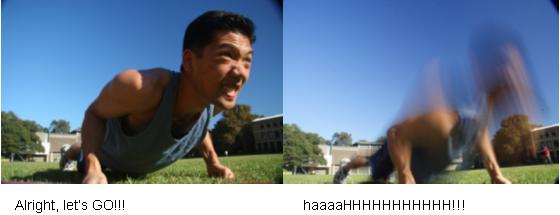
As you expect, there were people
walking past as I attempted to take photos
of myself doing push-ups…. Quite possibly having strange thoughts
about some strange person taking photos of himself doing push-ups….
Nevertheless, what pulled me through these embarrassing few
minutes was, of course, the thought
about all the food that awaited me after this!!
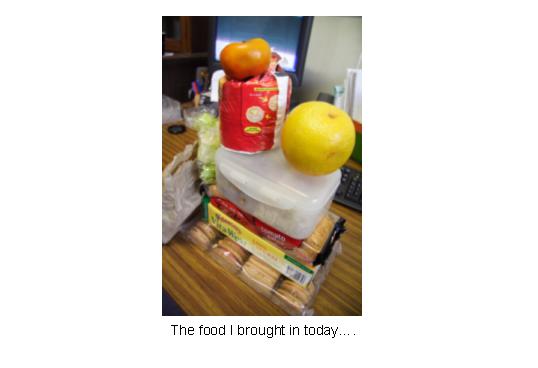
After showering to rid myself of the sweat and satisfying
my hunger for that brief moment of time, I started doing some
theoretical calculations to compare the predictions with the
experimental results that I had acquired the day before. This
involved writing some Matlab (a mathematical software) code
so that the computer can go away and think very hard about
what should happen in my experiment.

As it turned out, the theoretical predictions and my experimental
results didn’t agree… this time…. But that’s ok! It doesn’t
mean that the theoretical model or the experiment is wrong!
Rather, I need to go and do more detective work to investigate
where the discrepancy arises from, and refine the model and/or
the experimental method accordingly! It’ll take a bit more
time, but the detective work requires thinking and it makes
research that much more fun!!
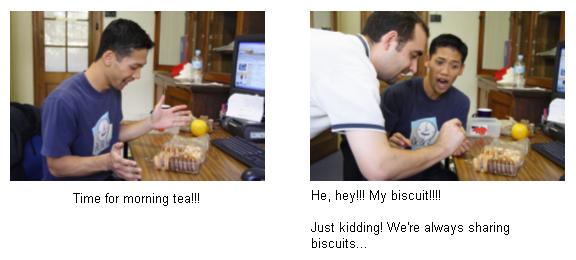
My afternoon (on a beautiful day with blue skies) was spent
in the lab, continuing on with my experiments. The first job
was to re-setup my experiment, which involved aligning a 15
cm piece of this specialty fibre (which costs > $1000/m)
with normal optical fibre (those deployed in current telecommunication
networks and costs (~$0.50 /m), so that we can measure the
amount of light propagating through them. Then we carefully
imprint the “grooves” on to the specialty fibre and observe
what happens to the light propagating through as we make the
light more intense…..
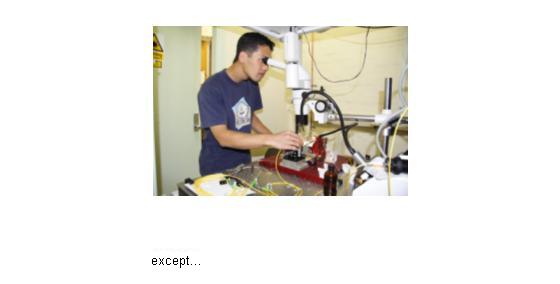
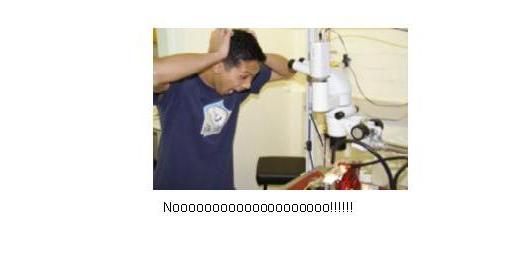



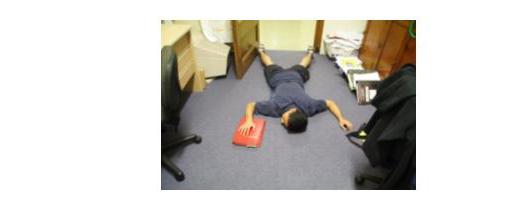
What was the high-point of the day?
Well, it was definitely the food
and the blue sky when I found that the theoretical
calculation and the experimental results didn’t agree, and
left me wondering, “hmmm, where in the model/experiment could
the discrepancy be coming from??”
How does this fit into my career?
My intended career path is to continue doing research in the
field of optics/photonics.
In the long term, I want to conduct research that benefits
a large portion of society. To get there, however, I need
to learn and absorb as much knowledge and skills as I can
now, and I think I’m in the right place to do that.
How did I end up here?
I’ve always been interested in science, particularly astronomy,
but what really inspired me into physics was the work-experience
at the Dept. of Applied Physics that I did back in
Year 10, and the International Science School
(www.scienceschools.usyd.edu.au)
that I attended in Year 11, both which exposed me to the environment
and the people who were passionate about research in physics.
I came to the University of Sydney to do a Bachelor
of Advanced Science, with my eyes set on continuing
onto a PhD in physics. By this time I was more interested
in experimental physics, because I couldn’t
imagine myself sitting at a desk/computer all day,
everyday. So I tried different experimental projects through
my undergraduate years, and finally found that optics/photonics
excited me more than the other fields that were on offer.
So here I am. Is this where I intended to be? Good question…
It’s definitely not where I intended to be when I was in primary
school…. I’m not so much interested in astronomy anymore (certainly
not in terms of research)… but then again I didn’t
know anything about optics/photonics until halfway through
my 3rd year at university….
So… I’m not quite where I intended to be, but I’m
definitely glad to be where I am now.
Reporter: Melinda Wong
|
|